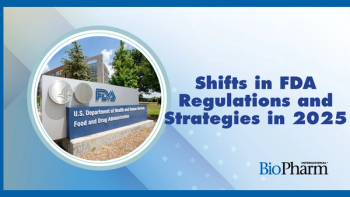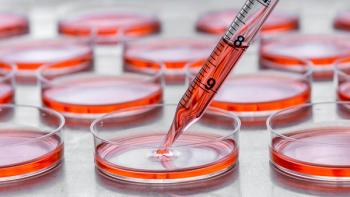
Trends in Aseptic Production and Storage of Sterile Biopharmaceuticals
A symposium at the AAPS National Biotechnology Conference in Boston, June 19-22, 2006, addressed key concerns and new developments in manufacturing biologic products in a sterile environment.
A symposium at the AAPS National Biotechnology Conference in Boston, June 19–21, 2006, addressed key concerns and new developments in manufacturing biologic products in a sterile environment.
Several speakers reiterated a key point to remember: people working in manufacturing facilities are the single biggest source of contamination. Products and procedures are being developed to address this concern.
Several presenters said that restricted access barrier systems are an effective way to limit human contact with biological material. Otto-Ernst Schubert, PhD, of Hoffman-LaRoche, (Basel, Switzerland,
Joerg Zimmermann, of Vetter Pharma-Fertigung GmbH (Ravensburg, Germany,
Safe storage of formulated protein bulk was also discussed during the session. According to Satish K. Singh, of Pfizer Global Biologics (St. Louis, MO,
Storing bulk material in liquid form in bottles, bags, or stainless steel tanks is a viable short-term option. Biologicals are generally unstable in a liquid state, however, so liquid storage uses up valuable shelf life. Liquids, especially in large volumes, also are difficult to transport. Freezing offers drug makers a long-term option for stable storage, but processes and formulations must be developed with this option in mind. Lyophilization, said Singh, is an expensive alternative and not viable for large volumes.
Singh referenced the ICH Q5C guideline, issued by FDA in July 1996, Quality of Biotechnological Products: Stability Testing of Biotechnological/Biological Products when discussing the selection of storage containers for stability testing of active pharmaceutical ingredients that would be representative of containers for commercial use. The guideline states, “The container/closure has the potential to affect the product adversely and should be carefully evaluated.” Factors to address include temperature, humidity, accelerated and stress conditions, exposure to light, container/closure product interaction, and temperature excursions. Disposable bioprocess bags and stainless steel tanks are currently the storage options that have proven to be most viable for large-volume, bulk biologic material, Singh said. He noted that appropriate studies have to be incorporated into the formulation development program to support their use, whether in the liquid state for short-term holding or in the frozen state for long-term storage.
-Pam Holland-Moritz
Newsletter
Stay at the forefront of biopharmaceutical innovation—subscribe to BioPharm International for expert insights on drug development, manufacturing, compliance, and more.





